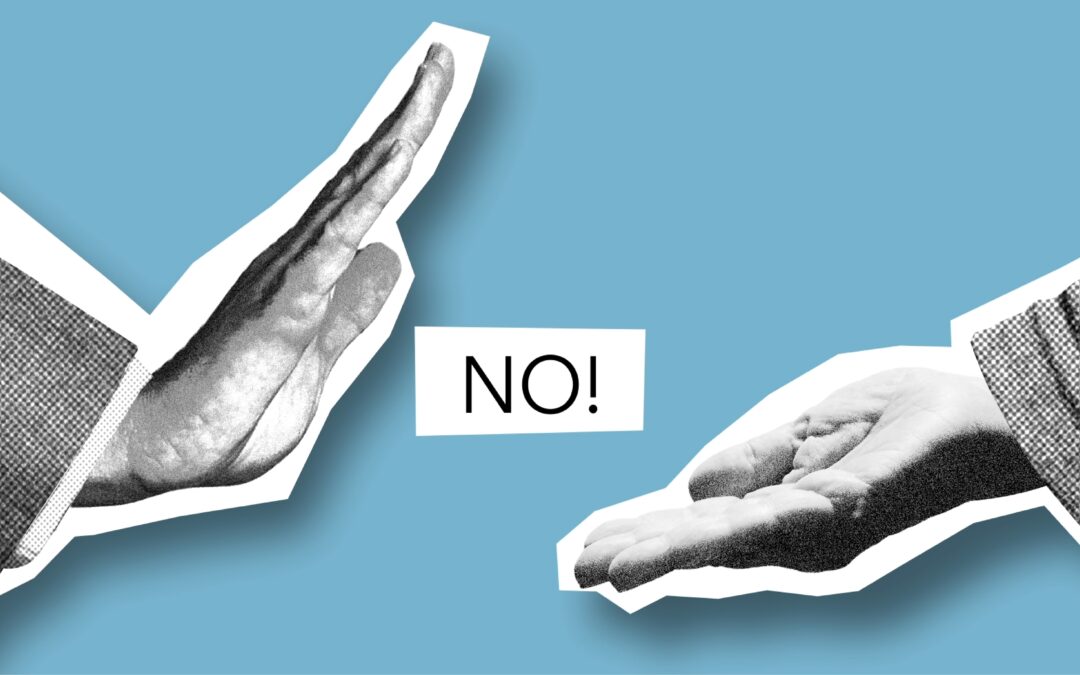Saying NO to clients can be a very risky road to take, and perhaps the riskiest word in the entire business landscape, no matter what industry. But somehow No’s can do more good, than any overthought harm. Take the case of the widely observed decision fatigue phenomenon, everyone has it and suffers from it. You can expect that this fatigue can affect how clients make decisions.
With that in mind, businesses should be wary of choices and decisions that are born from clients’ tired minds. While it is understandable you just want to give the best to your clients but sometimes what they want isn’t the best for them – and most of the time, they don’t know that. Saying no to them is perhaps a blessing.
But the elephant in the room here is: “what happens when you say no? And how do you go about saying that in the most graceful way possible?”. Chris Cardinal of Synapse Studios did a great article on this for Entrepreneur.com, which I think many business owners must read.
First off, saying no is not about not approving what they want, or going against their decisions, but a matter of letting them know that they hired you for a reason – your expertise. While you may not know everything, you’re still the subject matter expert.
Saying no can build trust unlike you’ve assumed – it just takes building up the right foundation in the client-business relationship. Here’s how:
1. The Customer (or Client) Isn’t Always Right
Your customer or client came to you because you know better, you’re the service provider. Chris exclaims how the age-old saying “customer is always right” is not always right, and is more frequently wrong. However, to cushion whatever possible quarrels and misunderstandings, the classic approach of “setting expectations” is always the best way.
Setting expectations can help clarify how a particular collaboration will work. And that mostly includes listening to your client’s ideas and goals, and vice versa. However, that can only work if you can find a client that is willing to meet halfway.
Chris couldn’t have said it better with, “ If clients aren’t willing to deviate from their ideas no matter what the research says, they’re not a good fit for the type of collaborative relationship we’re trying to establish.”.
One good approach to setting expectations when it comes to agreeing (or disagreeing) on decisions is to be objective as possible. Chris’ article “letting data decide…” helps you put things into objective perspective. Because clients may not always be right, you don’t either. Collaboration founded on setting expectations can help you find the best common ground, and build together from there.
The data-backed approach helps you move around the uncertainties you and the client have in the business. And at the same, it helps both parties arrive at more educated decisions.
2. Find out the “Why”
There can be a lot of instances where your clients have random bursts of brain dump just for the sake of innovation. However, none of them could make sense at the time. So it is important to see beyond that and get pretty analytical, as Chris wrote in his article: “dig deep”.
You have to help them find the deeper sense and root causes of these ideas – most often than not, the real answer is a certain need or desire. You can find out the why together by applying the “Five Whys” method.
It is quite simple. The main objective is to identify the underlying source of a flaw or issue by repeatedly asking “Why?”. The reason for the number five in this sentence is that, according to anecdotal evidence, the answer to the question “why” can generally be found after five attempts.
Depending on how deep the fundamental cause goes, there may be more or fewer whys in various situations.
3. Their Perceived Best Interest Isn’t Always Their Best Interest
Here’s the thing, clients always think that what they want is the best option there is, but they don’t know that. Telling them no and why it won’t work is often an idea one would like to go around and it’s completely fine.
However, when you have established trust in the relationship, diplomacy is a piece of cake. But building trust as Chris writes is “by showing that your priority is their success”.
What they come to you with is often born out of just the lack of knowledge of what’s possible. And, sometimes clients can have ideas that can be risky and might result in pitfalls that can be “disastrous at worst”, talking them out of it is the best diplomacy you can give.
This is where trust in the relationship comes in. You should be able to explain how a different approach or idea can deliver a better profit while assuring them that your ultimate motive is to see the best results for their business.
One thing about ideas is that there is more than one best option, like more cost-effective ways, and better, even faster ROI, and sometimes it goes over your client’s head. You should be the one to give it to them, even if it means talking them out of spending thousands of dollars for your service.
Saying no and the ability to, despite the fears and risks is a necessity in business relationships. It helps both you and your client take things to better heights and discuss more issues that can be addressed early on. By turning down easy money and easy-baked solutions and ideas, you can thrive in the long run, further adding value and building trust.


Recent Comments